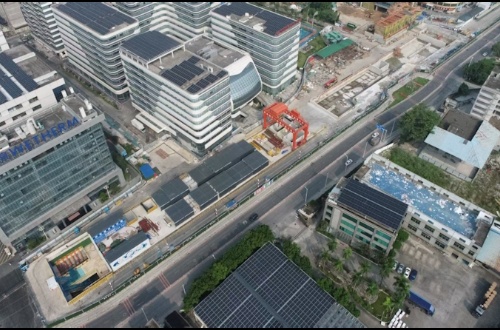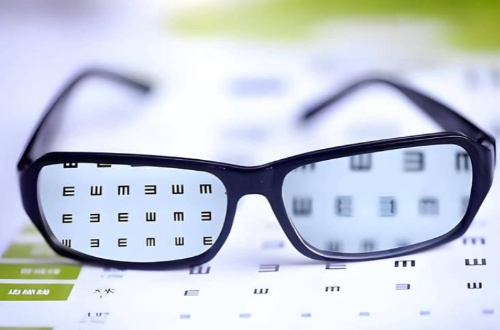After FDA Rejection of SYD-101, OT-101 Becomes the Focus for Myopia Progression
 2025-11-18
2025-11-18
Introduction
Myopia is a significant public health problem. It is estimated that on average, 30% of the world population is currently myopic (Attebo, Ivers, et al. 1999, French, Morgan et al. 2013). The World Health Organization had previously set a goal to eliminate preventable blindness in the world by the year 2020, with refractive error, including myopia, as one of its top five priorities (WHO 2000). The high prevalence of myopia and its prominence as a public health problem emphasize the importance of gaining increased understanding of the mechanisms of eye growth and of finding effective treatments that slow progression and axial elongation.
The most common treatment option for myopic patients is prescription lenses (eyeglasses or contact lenses). Although prescription lenses can aid vision, they do not treat the underlying cause of myopia or prevent further progression. One alternative that can ‘cure’ myopia is refractive surgery once the disease is stable. However, due to the expensive cost, limited eligibility and availability, most patients with myopia have to wear eyeglasses or contact lenses throughout their lives.
Slowing myopic progression could help prevent myopic progression to the point of high
myopia which can be associated with a number of pathological conditions, including
retinal detachment, myopic retinoschisis, macular holes, choroidal neovascularization,
and chorioretinal atrophy. If the progression of myopia can be reduced by early treatment
with atropine, a significant benefit could be a reduced risk of the conditions associated
with high myopia.
Over 150 years ago atropine was first recommended as a treatment for myopia (Donders,
1864) and investigated in the treatment of myopia progression in children (Derby, 1874).
However, to date, there are currently no approved drugs for the treatment of the
progression of myopia in the United States and Europe. There is significant therapeutic
benefit, and a good safety profile demonstrated in the pediatric populations as
demonstrated in several clinical trials investigating atropine for the treatment of myopia
progression in children. The increasing prevalence of myopia in the target population
confirms the need for additional treatment options for the proposed indication (Chua,
Balakrishnan et al. 2006, Chia, Chua et al. 2012, Galvis, Tello et al. 2016, Mori,
Mochizuki et al. 2019, Wang, Syn et al. 2019).
The safety and efficacy of different concentrations of atropine eye drops in controlling
myopia progression over 5 years has been tested in a randomized, double-masked clinical
trial (Chia et al. 2012, Chia et al. 2014, Chia et al. 2016). Atropine was administered for
24 months in the treatment phase (phase 1) followed by a washout period (without
atropine) of 12 months (phase 2). In phase 3 (re-treatment phase) children who had
myopic progression of -0.50 D or more in at least 1 eye during the washout phase were
restarted on atropine 0.01% for an additional 24 months. The results show that there was
a dose-related response in phase 1 with a greater effect at higher doses, but an inverse
dose-related increase in myopia during phase 2 (washout), resulting in atropine 0.01%
being most effective in reducing myopia progression at 3 years. In phase 3, 24%, 59%,
and 68% of children originally in the atropine 0.01%, 0.1%, and 0.5% groups,
respectively, who progressed in phase 2 were restarted on atropine 0.01%. Younger
children and those with greater myopic progression in year 1 were more likely to require
re-treatment. The lower myopia progression in the 0.01% group persisted during phase 3,
with overall myopia progression and change in axial elongation at the end of 5 years
being lowest in this group compared with the 0.1% and 0.5%,groups. Atropine 0.01% also caused minimal pupil dilation (0.8 mm), minimal loss of accommodation (2-3 D), and no near visual loss compared with higher doses.
The conclusion of this study was that over 5 years, atropine 0.01% eyedrops were more
effective in slowing myopia progression with less visual side effects compared with
higher doses of atropine (Galvis, Tello et al. 2016).
If the progression of myopia can be reduced by early treatment with atropine, a significant benefit could be a reduced risk of the conditions associated with pathological myopia.
Regulatory Progress 2025
As of 2025 there is no low dose atropine approved in the United States to treat the progression of myopia in pediatric patients. There were announcements of discussions with regulatory agencies (REF) but without details aiding future clinical development. Understanding the necessary criteria for approval including the minimal clinical response between groups would be important for all efforts in this therapeutic area.
Recently there was a submission to the FDA with a complete response letter generated in response (ref). It was based on a clinical trial (STAR) in pediatric patients with myopia (NCT03918915). This was a multicenter (with sites in the United States, Austria and Slovakia), randomized, vehicle controlled study to assess the efficacy of SYD-101 (0.01% and 0.03% atropine strengths in a novel formulation ) in children between ages of 3 and 14 years with myopia of -0.50 D to –6.0 D compared with placebo (vehicle that is used for SYD-101) eye drops. The treatment is administered in each eye at night at bedtime. There were two parts for the study. Part 1 was for 36 months with patients randomized 1:1:1 ratio to receive one of the three treatments groups assigned above. At 36 months , in part 2, patients were re-ranomized to receive either receive active or placebo (if active was received in Part 1) and one of the active groups if placebo was received in Part 1 with further analysis of data at 48 months. (REF)
This study had specific primary regulatory endpoints dependent on locaton; the FDA had a different endpoint from the EU. (REF). For the FDA primary endpoint the proportion of randomized patients with confirmed myopia progression worse than 0.75D at or before Month 36 was stated by the protocol. (REF—Multiple). For the EU the primary endpoint was the difference in mean annual progression rate of myopia through Month 24. Sample size determination was made to support a difference of 15% for myopia progression worse than 0.75D between active groups and placebo (the FDA endpoint); for the EU the sample size calculation supported a reduction of 0.18D or more in the annual progression rate of myopia. (REF)
Outcome
This is the first public disclosure confirming the endpoint for the FDA. There is also now an indication of the clinical importance needed for approval (the difference in progression was 9.6%). The requirement for having statistical significance and clinical importance has been published over decades with both thresholds needing to be met (ref). The FDA issued a complete response without approval. (REF).The EMA document had observations regarding the FDA endpoint. For the EMA the endpoint was an established secondary endpoint. The insight provided regarding this endpoint included:
- Group sample sizes of 280 in each treatment arm was to achieve at least 90% power to detect a difference in the percentage of participants with myopic progression (worse than -0.75 D) of at least 15% between a SYD-101 arm and Vehicle (FDA related primary endpoint). Power calculations are based on the Chi-squared test at a 2-sided significance level of 0.025.
- At M36, the difference in confirmed myopia progression (>0.75D) compared to vehicle in the FAS, was -9.6% (95% CI -17.91, -1.26; p=0.0459) with the lower dose 0.1 mg/ml. In addition of supplementary analysis, subgroup analyses were performed and it appears that better efficacy in lighter myopia (in both groups) and younger patients (SYD-101 0.01) was observed. Similar results were obtained with the requested sensitivity analysis at M36, the difference in confirmed myopia progression (>0.75D) compared to vehicle in the full analysis set, was -9.1% (95% CI -17.11, -1.01; p=0.0533) with the lower dose 0.1mg/ml.
Supportive insight in this case is provided by the interaction with the EMA for EU approval. This clinical trial did not meet the primary endpoint as desired clinical importance failed (0.13D per year compared with target of 0.18D per year) ; different from the experience in the United States it was feasible to generate a smaller “fast responder” population with the appropriate clinical importance and statistical significance . Even with this approval post-approval submission is required in 2026. Supporting conclusions from the public document amplify the observations regarding the study:
- While of only borderline clinical relevance, the effects for Ryjunea 0.01% are statistically persuasive in the pre-defined fast progressor subgroup >0.5 D/year, to which the label has been restricted. These effects are weighed against its relatively benign risk profile. Hence, for Ryjunea (0.01%), thebenefit/risk balance is considered positive for “slowing the progression of myopia in paediatric patients.Treatment may be initiated in children aged 3-14 years with a progression rate of 0.5 D or more per year and a severity of -0.5 D to -6.0 D”.
- The primary endpoint at 24 months was the difference in mean annual myopic progression rate compared to vehicle and was statistically significant in both treatment groups with a difference compared to Vehicle of: 0.132 D (95% CI: 0.061, 0.204; p-value of 0.0003) for SYD-101 0.01%. However, this difference is inferior to the one pre-specified in the sample size (0.18 D or more).
- Long term clinical benefit is uncertain for 0.01% dosage given the limited study duration in relation to the ‘at-risk period’ for myopia (i.e., full duration of eye growth) and given the lack of data on rebound effects from SYD-101-001. Additionally, literature data with atropine show a loss of efficacy after treatment cessation, which is of major concern. This adds to the concern why assessment of Month 48 data remains needed. The applicant committed to submit the Month 48 data in a PAES. This approach is acceptable for Ryjunea 0.01%, as B/R is favourable for this strength and as literature indicates that rebound risk decreases with decreasing atropine concentrations, and results for Ryjunea 0.01% up to Month 36 support the proposed label (i.e., slowing of myopia progression in patients 3-14 years with a progression rate of >0.5D).
All low-dose atropine products are not identical. For Syd-101 was described by the EMEA as being a finished product :
- The finished product (FP) is a clear and colourless, sterile preserved eye drops solution with a pH of 5.4 and an osmolality of 280 mOsm/kg, containing 0.1 mg/mL of atropine sulphate, with a nominal fillvolume of 2.5 mL into 5 mL bottle with tip and cap. The composition of the FP contains atropine sulfate, citric acid (E330), sodium citrate (E331), sodium chloride, benzalkonium chloride, sodium hydroxide (E524)/hydrochloric acid (E507) (for pH adjustment) and deuterium oxide, as described….
- Deuterated water or deuterium oxide is the form of water that contains two atoms of the hydrogen isotope with a mass double that of ordinary hydrogen (D). Its IUPAC name is (2H2) Water. Its structure has been elucidated bi IR spectroscopy.It is a colourless and odourless liquid with a density of 1.107 g/mL (at 25°C) and a viscosity of 1.25mPa s (at 20ºC). It has a LogP value of -1.38 and a pH of 5.5 - 6.0.
Contrast that with OT-101 illustrating that there are differences even within products with the same active ingredients. These other features, it can be speculated have impact on efficacy and safety. For OT-101 the final product contains atropine sulfate, citric acid, sodium citrate, mannitol, sorbitol, EDTA, and benzalkonium chloride with use of sodium hydroxide/ hydrochloric acid to titrate to the target of PH 5.9 with sterile water. OT-101 has a pH closer to neutral pH; no deuterium is in the formulation minimizing any effect on viscosity, albeit small.
Taken together this most recent low dose atropine study and regulatory interaction demonstrate the endpoints needed for approval by region and the type of clinical importance necessary for approval. OT-101 continues to be studied.
Newest
-

POLS: Building a Sustainable Web3 Economic Ecosystem
-

The Left Line Shield Machine of the Jiao-Feng Section on the North Extension of Guangzhou Metro Line 8 Project Successfully Launched, Project Enters "Dual-Line Tunneling" Mode
-

ZJ global short video contest launched
-

After FDA Rejection of SYD-101, OT-101 Becomes the Focus for Myopia Progression
